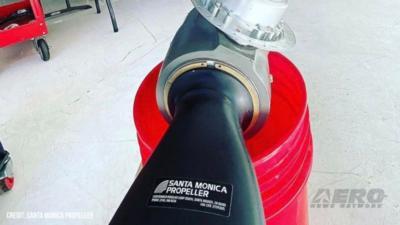Sun, Apr 21, 2024
NTSB Issues Safety Alert on Aluminum Prop Blades
Aviation authorities have recently emphasized the critical importance of regular and thorough inspections of aluminum propeller blades, especially for aircraft frequently operating in harsh environments such as backcountry, aerial application, and coastal areas.

These guidelines aim to enhance the safety and airworthiness of the fleet by preventing propeller blade failures that could result in severe accidents.
The recommended practices focus on meticulous inspections at various stages of a propeller's operational lifecycle. Maintenance personnel are advised to follow a systematic approach by adhering to the maintenance manual and employing detailed checklists. This includes inspecting every part of the propeller, especially the leading edges and back sides of the blades, which are prone to damage. Sections of larger propellers should be marked off to ensure no area is overlooked.
Utilizing optimal lighting conditions and magnification tools is crucial for identifying any potential damage, especially those that might be concealed by cosmetic painting. This attention to detail helps in detecting underlying issues that could compromise the propeller's integrity and functionality.

Moreover, post-maintenance checks are highly recommended, involving a secondary review by another qualified individual, which could be another mechanic or a pilot, depending on the type of repair. This practice is aimed at ensuring that all maintenance work meets the necessary safety standards.
For aircraft not governed by standard overhaul timelines, such as public aircraft and certain parts of private operations, it is advised to maintain propellers strictly according to the manufacturer’s guidelines. This includes adhering to recommended overhaul schedules and keeping detailed records of all inspections and repairs in the propeller logbook.
The FAA's Advisory Circular AC 20-37E on Aircraft Propeller Maintenance and other service documents provide comprehensive guidance on maintaining propeller blades. These documents are vital for keeping maintenance personnel updated on best practices and new technological advancements in propeller maintenance.
As aircraft operations continue to evolve, the emphasis remains on ensuring that all components, particularly propellers, are maintained to the highest safety standards. This proactive approach in regular maintenance and inspection is essential for the safety of the aviation industry.
More News
Also: Outlaw Prop 4 Mooney, Ready 4 Duty, Ukrainian F-16 Pilot Lost, Blue Origin Flt On his journey to become the first pilot to land solo on all seven continents, 19-year-old Etha>[...]
Also: DarkAero Update, Electric Aircraft Symposium, Updated Instructor Guide, OSH Homebuilts Celebrate The long-awaited Sonex High Wing prototype has flown... the Sonex gang tells >[...]
Discrete Code As used in the Air Traffic Control Radar Beacon System (ATCRBS), any one of the 4096 selectable Mode 3/A aircraft transponder codes except those ending in zero zero; >[...]
From 2023 (YouTube Edition): Deviation from the Historical Mean Racine, Wisconsin-based DeltaHawk is a privately-held manufacturer of reciprocating engines for aircraft and hybrid >[...]
Aero Linx: Formation and Safety Team (F.A.S.T.), USA The Formation and Safety Team (FAST) is a worldwide, educational organization dedicated to teaching safe formation flying in Wa>[...]
 Airborne 07.02.25: TikToker Arrested, Vietnam A/L Ground Hit, ATC Modernization
Airborne 07.02.25: TikToker Arrested, Vietnam A/L Ground Hit, ATC Modernization Airborne Affordable Flyers 07.03.25: Sonex HW, BlackShape Gabriel, PRA Fly-In 25
Airborne Affordable Flyers 07.03.25: Sonex HW, BlackShape Gabriel, PRA Fly-In 25 ANN's Daily Aero-Term (07.07.25): Discrete Code
ANN's Daily Aero-Term (07.07.25): Discrete Code Classic Aero-TV: DeltaHawk Aero Engine Defies Convention
Classic Aero-TV: DeltaHawk Aero Engine Defies Convention ANN's Daily Aero-Linx (07.07.25)
ANN's Daily Aero-Linx (07.07.25)




